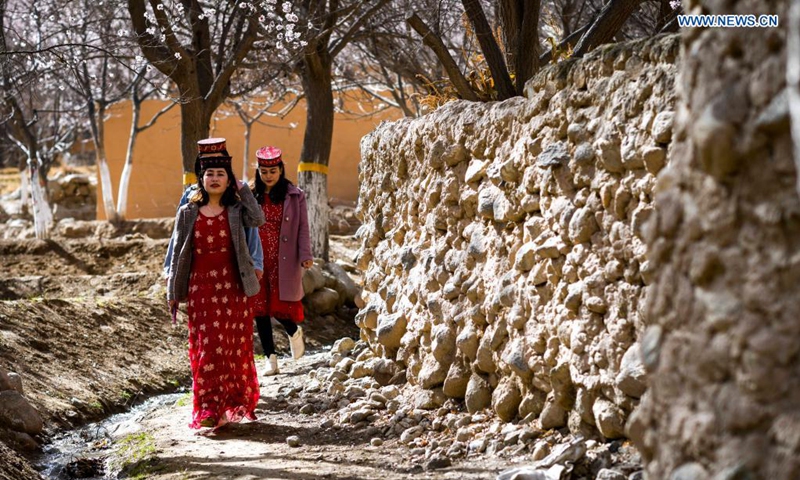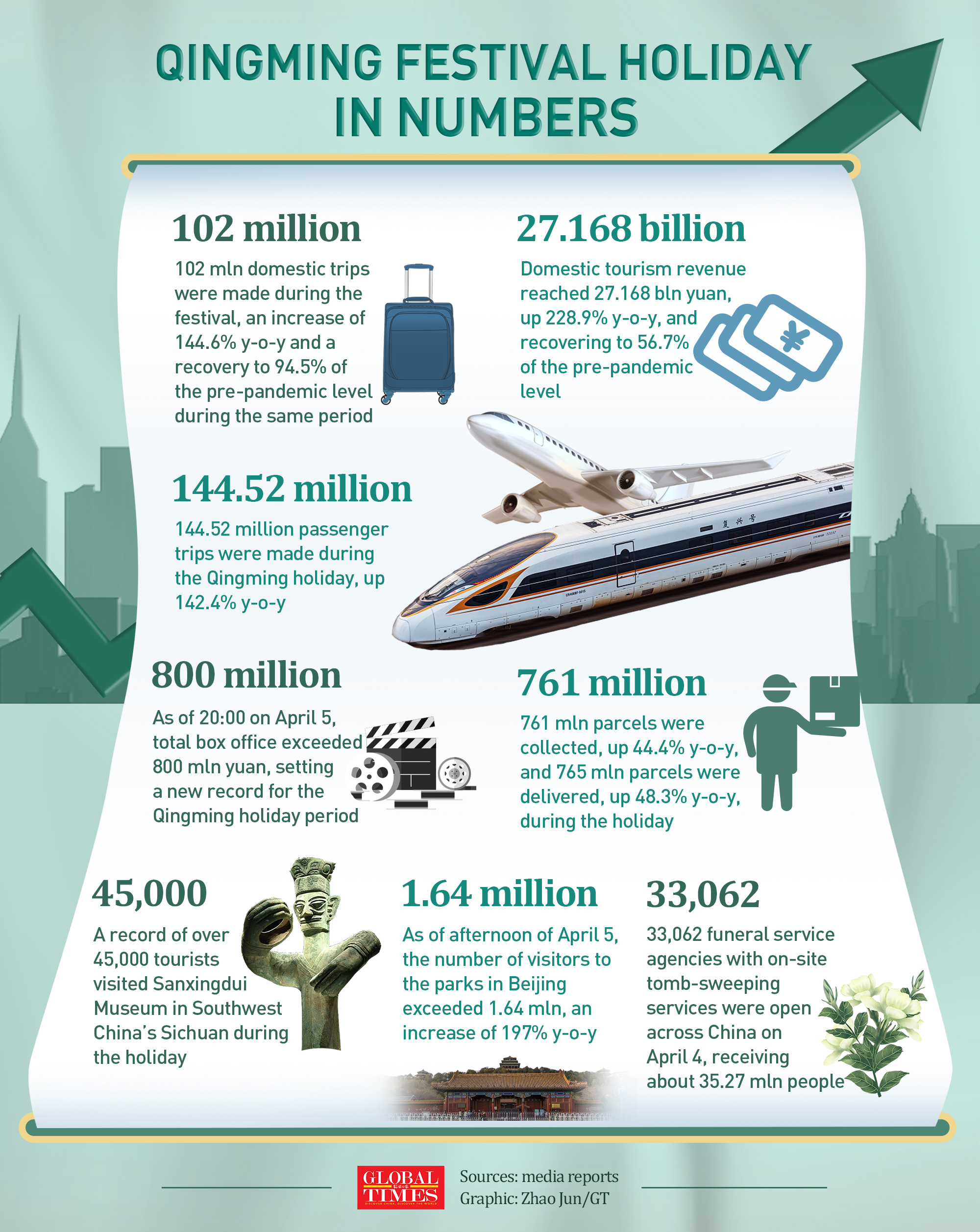China set for full recovery in tourism, but spending remains sluggish
Trip numbers to surpass pre-COVID-19 levels

Villagers walk on a road in Bageaigezi Villge of Akto County, northwest China's Xinjiang Uygur Autonomous Region, March 31, 2021. Local farmers and herdsmen in the mountainous area of Pamirs have seen their life turning better with the development of tourism and the improvement of infrastructure. Photo: Xinhua
The number of domestic trips in China during the upcoming May Day holidays will likely surpass the level of 2019, a year before the COVID-19 pandemic, industry experts predicted on Tuesday, as one of the hardest-hit sectors by the virus rolls toward a full-fledged recovery.
However, tourism income could remain below pre-coronavirus level, with a recovery of about 60-70 percent from the 2019 level expected, as consumer spending remains relatively sluggish, experts noted.
The predictions came after China's tourism figures for the recent Qingming Festival holidays showed a significant rebound. From Saturday to Monday, Chinese tourists made 102 million trips, recovering to 94.5 percent of the pre-COVID-19 level.

Qingming festival holiday in numbers. Graphic: GT
Data released by China Railway also showed that 49.91 million passenger trips were made during this year's Qingming Festival, recovering to 92.4 percent of the corresponding level in 2019.
The figures shed light on the rapid recovery of the tourism market in the post-epidemic era and showed that in terms of trip numbers, the domestic travel market has almost entirely returned to normalcy, another milestone in China's world-leading recovery from the pandemic.
These trends, along with hot bookings for the May Day holidays, have led some industry players and experts to predict that China's tourism market will surpass the 2019 level during this year's May Day holidays.
Xu Xiaolei, marketing manager at China's CYTS Tours Holding Co, said that on the company's platform, the number of bookings for this year's May Day holidays, such as for hotels and tourism sites, were already about 10 percent higher than in 2019.
"Just in terms of tourism trips, I believe this year's total visits will surpass the level in 2019," he told the Global Times. He cited a longer holiday this year, the shift of outbound tourists to the domestic market because of coronavirus restrictions, and the promotion of COVID-19 vaccines.
He Yuefeng, who runs a bed and breakfast hotel near China's famed tourism site Huangshan Mountain, said that the market seems hotter than in 2019, with many more inquiries. All rooms in his hotel are booked for the upcoming holiday.
Zhou Weihong, deputy general manager of China Spring Tour, also told the Global Times that considering the strong tourism rebound in recent days, tourism during this year's May Day holidays will likely surpass the 2019 level.
"Sales of high-speed railway tickets in Zhejiang and Jiangsu provinces have been very hot - not only for Qingming but for every weekend in April.
"For the May Day holidays, I predict that there will be more trips than in 2019 as many people, especially teachers and students, have been confined to their cities for more than a year and are eager to travel," she said.
Industry analysts are optimistic as well. Jiang Yiyi, a professor at the Beijing Sport University, said that the total number of visits should surge 60-70 percent for this year's May Day holidays compared with 2019.
However, experts don't agree that a complete recovery has arrived for China's tourism market. While visit numbers have recovered to near pre-epidemic levels, the industry's revenues are struggling to catch up.
During this year's Qingming Festival holidays, China's tourism income stood at 27.17 billion yuan ($4.15 billion), representing only about 56.7 percent of the pre-COVID-19 level.
Jiang predicted that tourism income will increase to about 60-70 percent of pre-epidemic level for this year's May Day holidays, as many people are still restricted to short-distance travel, which costs less than long-term and cross-border trips.
Zhang Lingyun, director of the Tourism Development Academy at Beijing Union University, said that since incomes haven't risen much, and inflation has been relatively high recently, it's unlikely that most people will spend more on travel.
"Certain places, like Hainan Province, might see tourism income rebound to pre-COVID-19 levels, but a general rebound is too early," he said.
According to Zhang, a complete recovery of the tourism market, including trip numbers, tourism spending and tourism products resumption, will not come until next year.
Xu also said that China's tourism recovery is a little "imbalanced", with tourism sites and hotels outperforming exhibitions and travel agents' business.
According to XU, the domestic travel boom has been triggered in part by restrictions on cross-border travel, which is not necessarily a good thing, as this adds more pressure to domestic tourism sites in terms of managing passenger flow and ensuring service quality.
But analysts expect consumption to play a bigger role in driving China's GDP growth, and it could even push the economy to a growth rate of more than 8 percent in the second quarter. On Tuesday, the IMF ratcheted up China's 2021 GDP growth projection to 8.4 percent in its latest issue of World Economic Outlook, up 0.3 percentage points from its January forecast.




